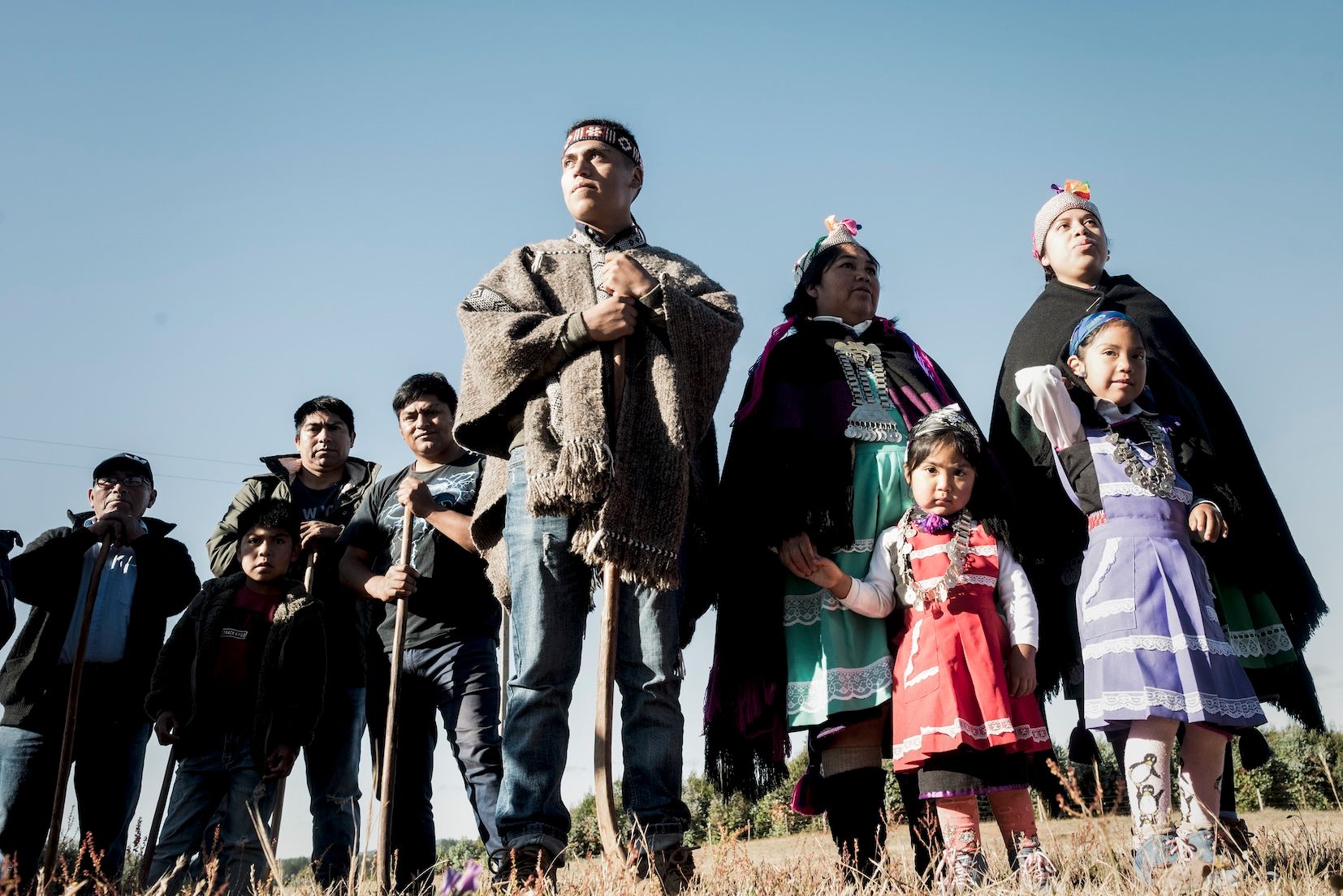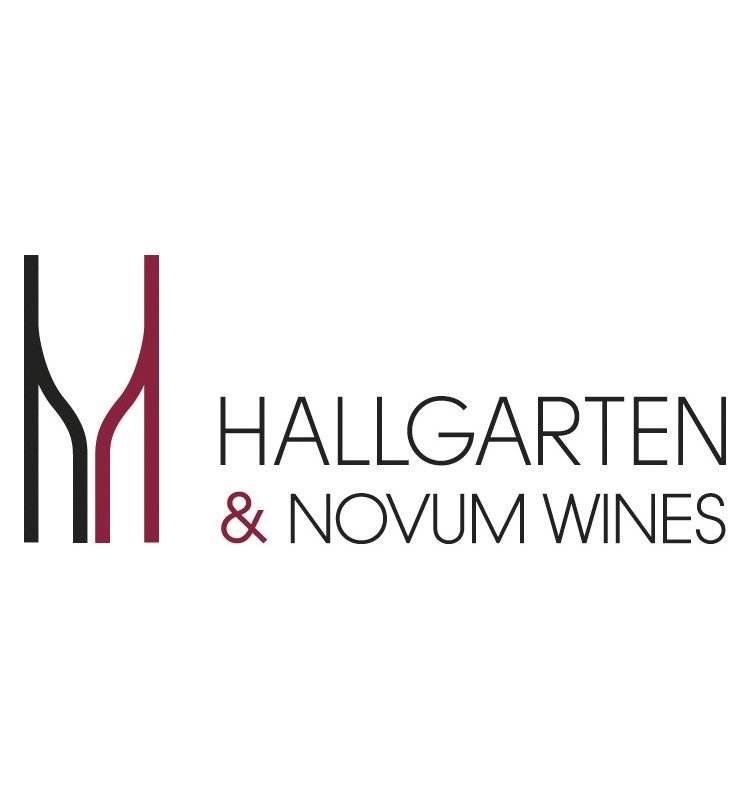When I lace up my trainers for a long run, I often think of the Tarahumara: the Mexican tribe whose story Christopher McDougall immortalised in Born to Run. They run extraordinary distances barefoot or in sandals, powered by rhythm, endurance and a deep connection with the earth beneath them. Their running is not competition but communion – a harmony of movement, place and nature.
At a recent London tasting of Tayu 1865, a Pinot Noir project born from collaboration between Chile’s Mapuche community and Viña San Pedro, I couldn’t help but draw a comparison. The Mapuche, too, are people of the land – Mapu meaning earth, che meaning people – a culture rooted in the belief that all living things are bound by the same spiritual energy. Their resilience is cultural, physical and deeply human. Like the Tarahumara, they endure by staying connected to the land that defines them.
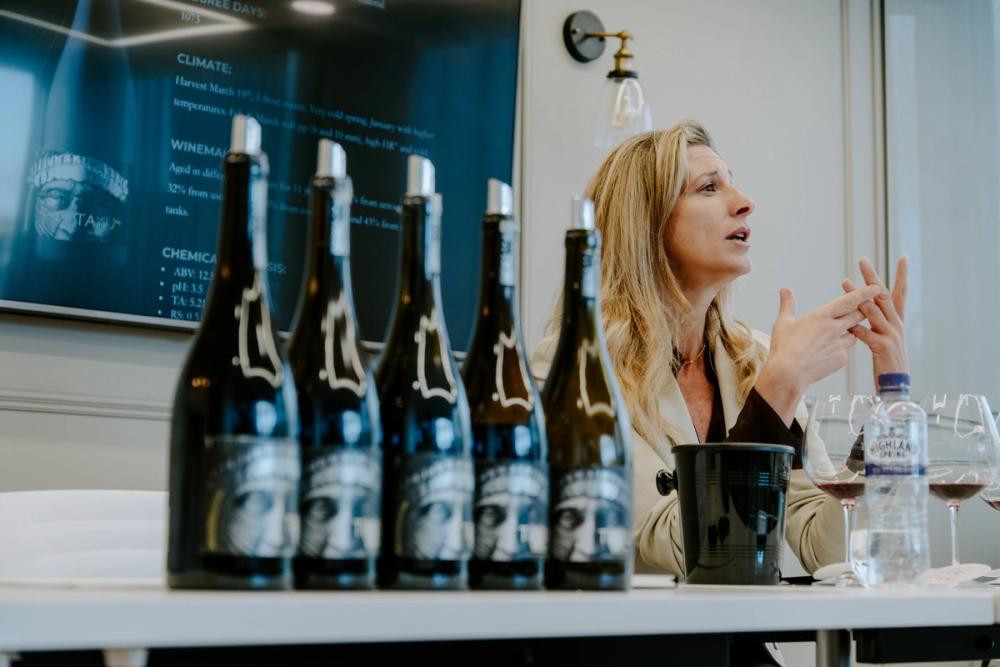
“The community owns the land, they own the vines, we simply share the wine.” Viña San Pedro's winemaker Viviana Navarrete, London Tayu tasting, November 13, 2025. ©Thomas Skovsende
Reimagining collaboration
The Tayu 1865 initiative began in 2015 under the guidance of Viña San Pedro’s sustainability and viticulture team, led by Juan Cury VSPT's chief agricultural officer, agricultural advisor Pedro Izquierdo and winemaker Viviana Navarrete, in collaboration with Chile’s Agricultural Development Institute (INDAP) and the National Irrigation Commission.
At its heart, Tayu is a long-term social sustainability project, but one that goes far beyond charity. “At the beginning,” recalls Navarrete, “we thought we were going to teach the Mapuche how to make wine. But in the end, it was an exchange: we’ve learned as much from them as they have from us.”
The winery interviewed indigenous families in the Araucanía region to find the right community to partner with. It settled on the Buchahueico Mapuche, near the town of Purén, because of their interest in agriculture and their commitment to working collectively.
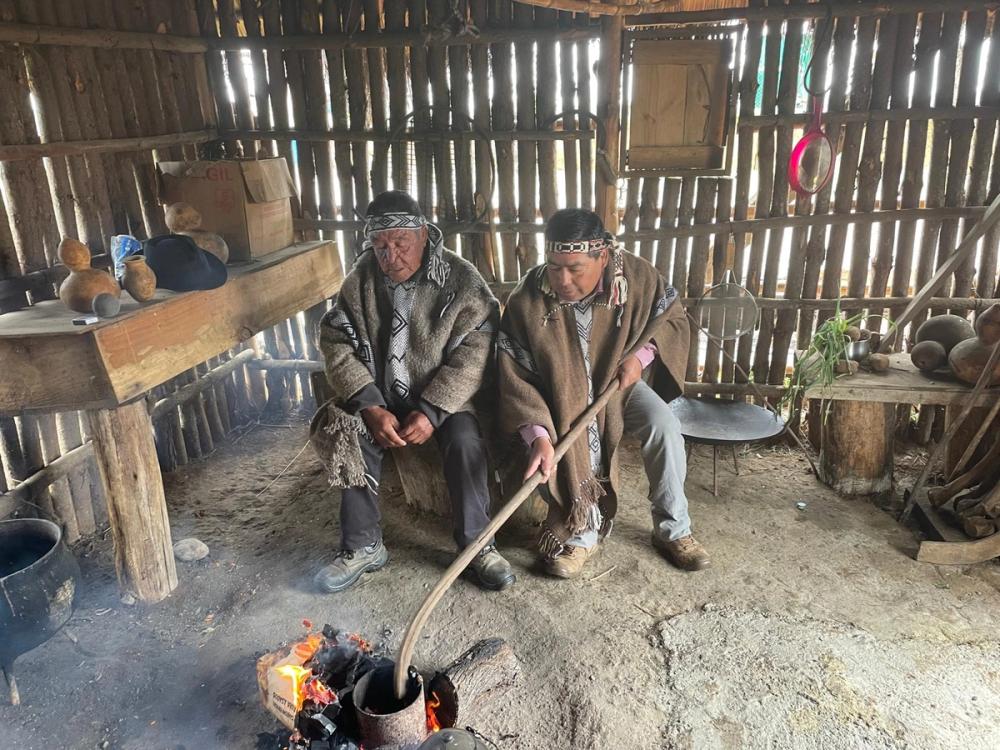
For the Mapuche families of Buchahueico and Hueco Chico, it represents continuity: the ability to remain on their ancestral land, to cultivate it on their terms and to see its fruits recognised internationally, writes O'Connor
In 2015 two families planted 2.5 hectares of Pinot Noir each. Every two years since, two more families have joined the project, each managing their own vines. As of 2024, there are 11 families and 37.5 hectares, all owned by the community. Viña San Pedro provides technical support and an advance for planting costs, repaid through the grape harvest over a 10-year term. Once the loan is settled, the families are free to sell their grapes to whomever they choose.
“It’s not a short-term project; the idea is that it lasts for generations,” says Navarrete. “The community owns the land, they own the vines, we simply share the wine.”
It is an arrangement that redefines collaboration in Chilean wine. The families work the vineyards themselves; their plots are small enough that vines grow almost at their doorstep. The project has brought water systems, solar panels and new economic stability to an area once reliant on low-wage forestry work.

The Malleco Valley is one of Chile’s most extreme viticultural zones
Malleco
The Malleco Valley, at 38° south, lies in Chile’s Araucanía region, some 600 kilometres south of Santiago. It is one of the country’s most extreme viticultural zones – a patchwork of rolling hills and cold air currents funneled through the Nahuelbuta mountain range.
The vineyards sit just 38 km from the Pacific, on the western foothills of the mountains, where the soils are a striking mix of red granitic clays veined with quartz. These are ancient, acidic soils (pH 5.2–5.5), rich in iron oxides that lend both colour and vibrancy. “When you taste Tayu, you can feel the quartz and the red clay,” says Navarrete. “The tannins are always grainy, the acidity always bright: that’s our fingerprint.”
A few parcels contain metamorphic slates (rare in Chile), adding a subtle edge of graphite minerality. Morning fog slows ripening, while mild summers and long autumns ensure a steady build of flavour.
Navarrete is notably data-driven in how she reads the region’s rhythm. She tracks degree days and daily temperature peaks across every growing season, not only for heat accumulation but for its distribution.
“A year might look cool on paper,” she explains, “but if you have ten days above 30°C at the wrong moment, it changes everything: sugar jumps, acid drops. We need to know when the heat comes, not just how much.”
That attention to pattern, rather than number, is helping Viña San Pedro calibrate canopy management and pick timing with impressive precision.
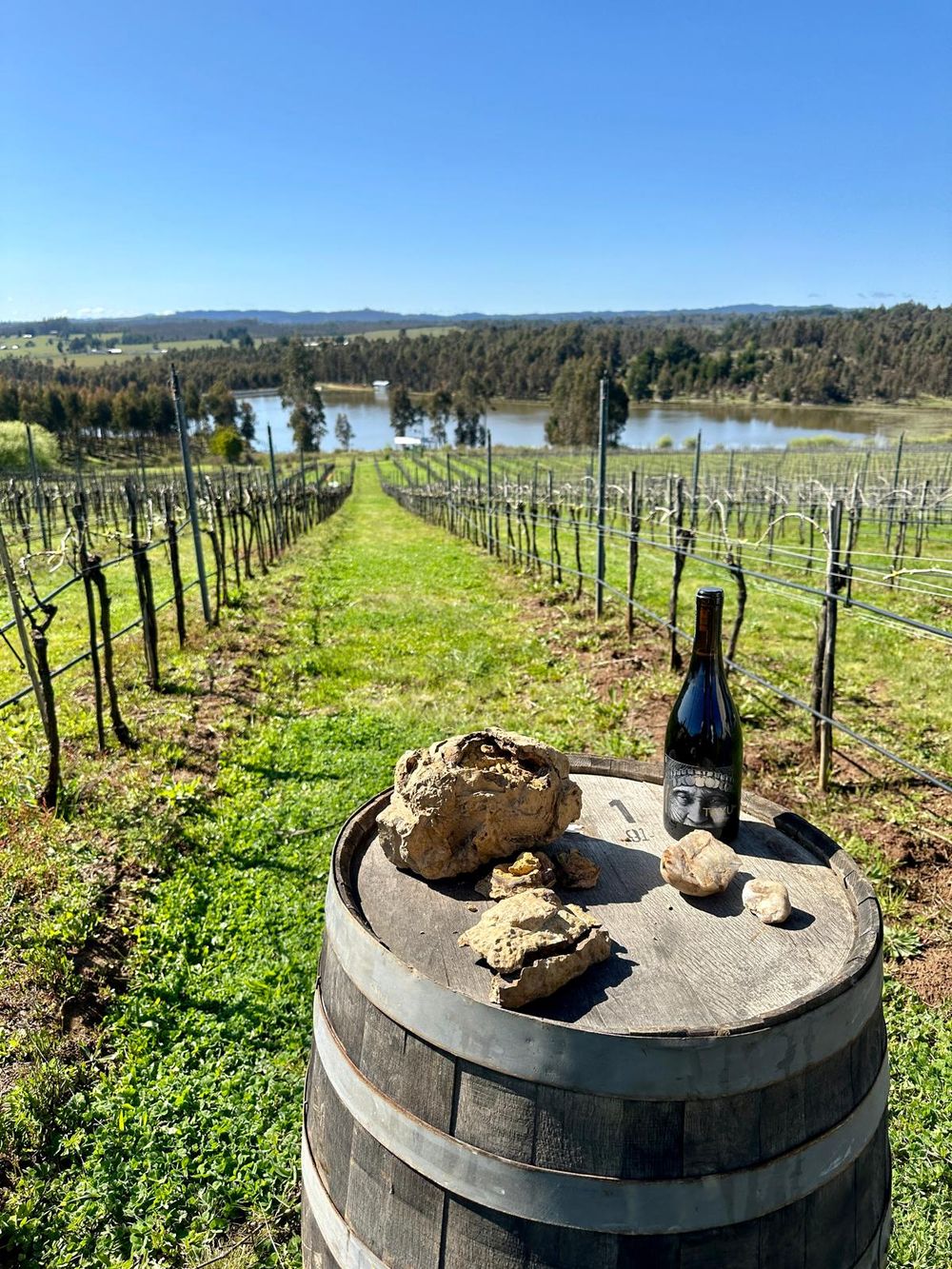
Pinot Noir through a southern lens
Navarrete, one of Chile’s most respected cool-climate specialists, brings nearly two decades of experience at Viña Leyda to the Tayu project. The grapes are fermented in concrete and small steel vats, using increasing proportions of whole clusters as the vineyards mature.
“Every year we’re learning to extract less,” she says. “Concrete and steel give us the precision we want, and whole clusters bring energy and lift: but what we’re really trying to do is let the place speak.”
Barrel use is minimal, reserved only to frame texture. “Oak builds structure,” she adds, “but it can also shorten the wine’s natural length.”
The vineyards are planted to a mix of clones: 115, giving spice and mid-palate depth; 777, offering perfume and precision with fine acidity; 82A, producing more earthy, savoury wines with square structure; 828, contributing dark fruit and textural weight; and a local massale selection that adds creaminess and black-fruit character, often harvested early to preserve tension. Each 2.5-hectare plot is vinified separately before blending, allowing the team to track each family’s site expression.
Tasting the vintages of Tayu Pinot Noir

Lilla O'Connor tasting Tayu, Institute of Masters of Wine, London, ©Thomas Skovsende
The first commercial release was 2018, and the progression since then is captivating.
Navarrete’s climate data mirrors what the glass reveals: remarkable consistency (all vintages but one with 12.5% abv), with only subtle fluctuations in ripeness and phenolic development year to year. “The evenness of the valley is extraordinary,” she notes. “It gives you confidence that what you’re tasting is the vineyard, not the weather.”
2019 – Generous yet refined, with forest floor, mushroom and fine-grained tannins. A benchmark of restraint and typicity.
2020 – Deeper and darker, showing tomato leaf, graphite and balsamic lift. A creamy, energetic texture runs through it.
2021 – The star vintage: truffle, cocoa, lavender and cardamom, all underpinned by a sleek umami core. Vibrant and complete.
2022 – Linear and red-fruited, touched by graphite and earth; warm-vintage precision.
2024 – The coolest to date, rosehip and crushed herbs, grainy-sweet tannins and a long, ethereal finish.
All hover around 12.5% abv, with pH between 3.3 and 3.5 and total acidity above 5 g/l – figures that speak to balance and nerve rather than ripeness.
For UK buyers, both current vintages of Tayu Pinot Noir are imported by Enotria, and listed at £16.85 (2022) and £17.01 (2024) per 75 cl bottle.
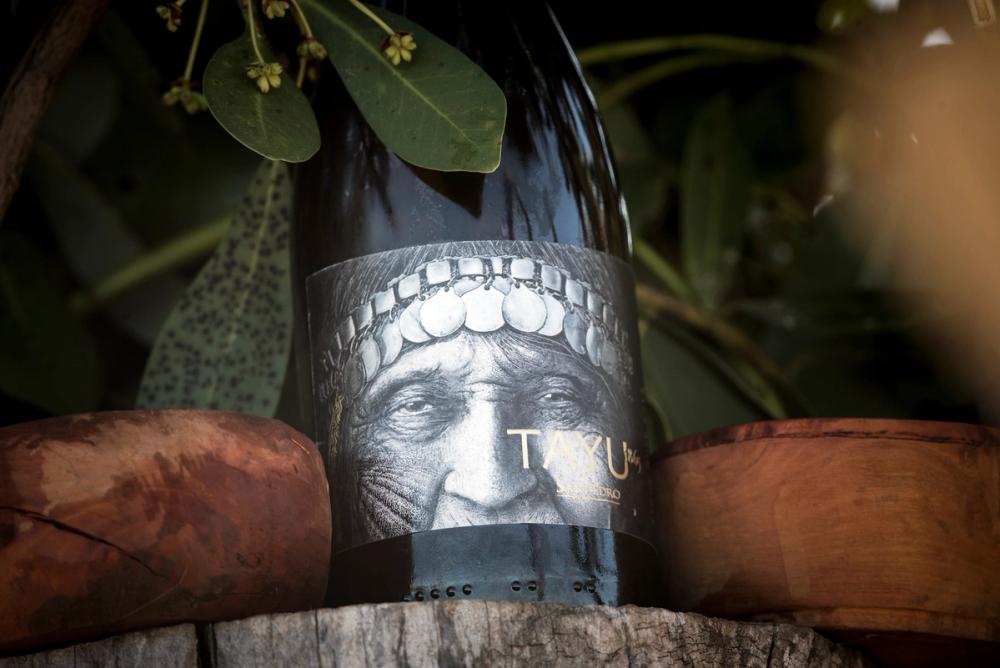
The social pillar of sustainability
It would be easy to frame Tayu as a case study in ethical wine production. But to reduce it to a sustainability success story misses its essence. This is not a corporate project layered with social gloss – it is an ongoing cultural exchange.
In Mapuche cosmology, the universe exists in three levels: the upper world of good forces (Wenu Mapu), the lower of hidden spirits (Minche Mapu) and the human realm between them, bound by balance. The Machi, the community’s elder woman healer, presides over that balance, linking the visible and invisible through ritual.
Before planting the first vines, the Machi insisted on a blessing ceremony. No machinery could touch the land until prayers had been said. “We thought we’d just start working,” Navarrete laughed, “but she told us: you must bring your children. So we all came back with our kids and prayed for the land together.”
That ritual seems to have set the tone. What began as an agricultural partnership has become a shared way of seeing the world. The Mapuche have learned canopy management and pruning; Viña San Pedro has learned patience and reverence.
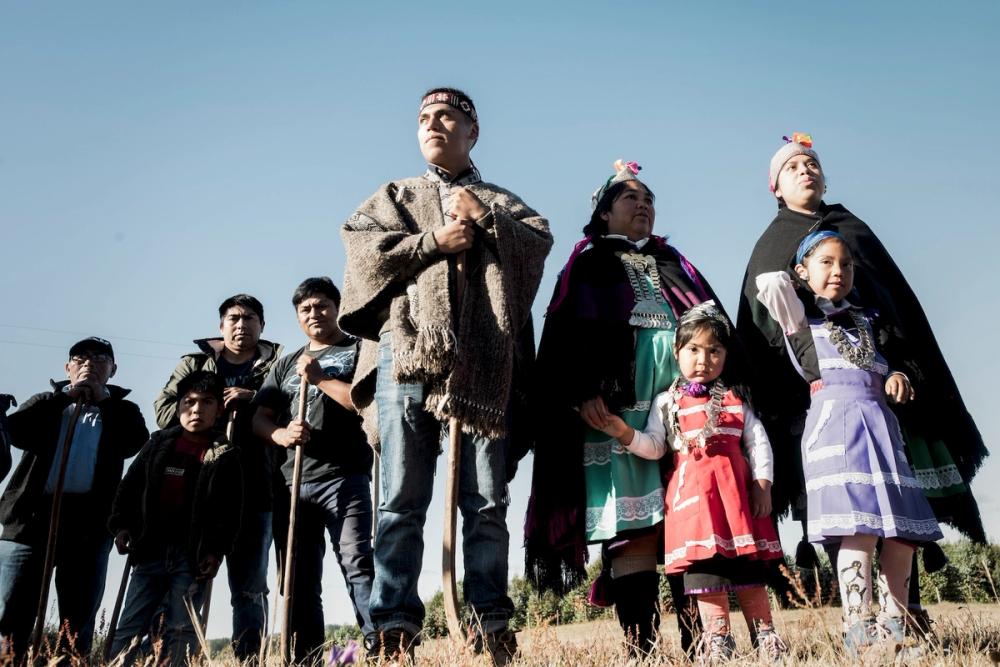
Before planting the first vines, the Machi insisted on a blessing ceremony.
Looking south
For Chile, Malleco could represent the country’s next opportunity – cooler latitudes, slower ripening, wines of clarity and nerve. For the Mapuche families of Buchahueico and Hueco Chico, it represents continuity: the ability to remain on their ancestral land, to cultivate it on their terms and to see its fruits recognised internationally.
Tayu, which means ours in Mapudungun, captures precisely that sense of belonging. It is a wine that embodies the land, the people and the quiet beauty of collaboration.
As a runner, I think of the Tarahumara in two ways: endurance as harmony, movement as connection. The Mapuche teach something similar through wine – that the most profound expressions of place are not extracted but earned, through rhythm, respect and time.
The VSPT Wine Group is a commercial partner of The Buyer. You can find out more about them here.
